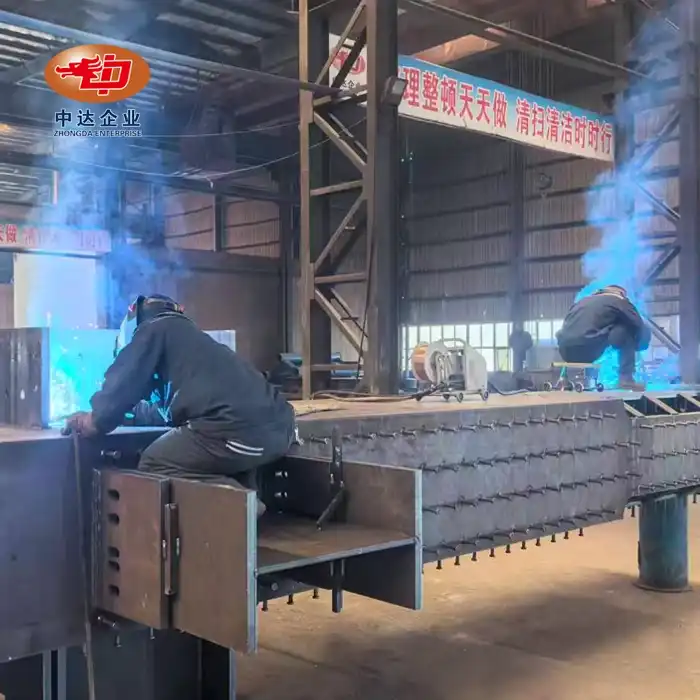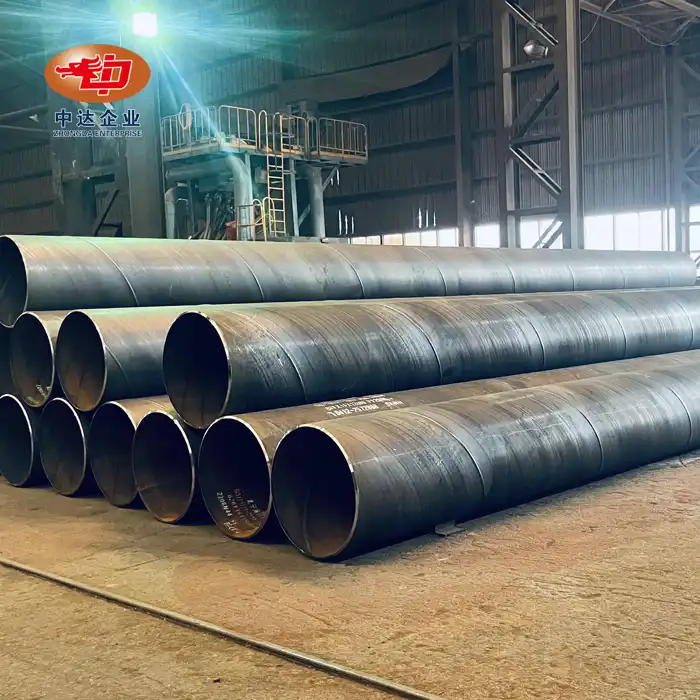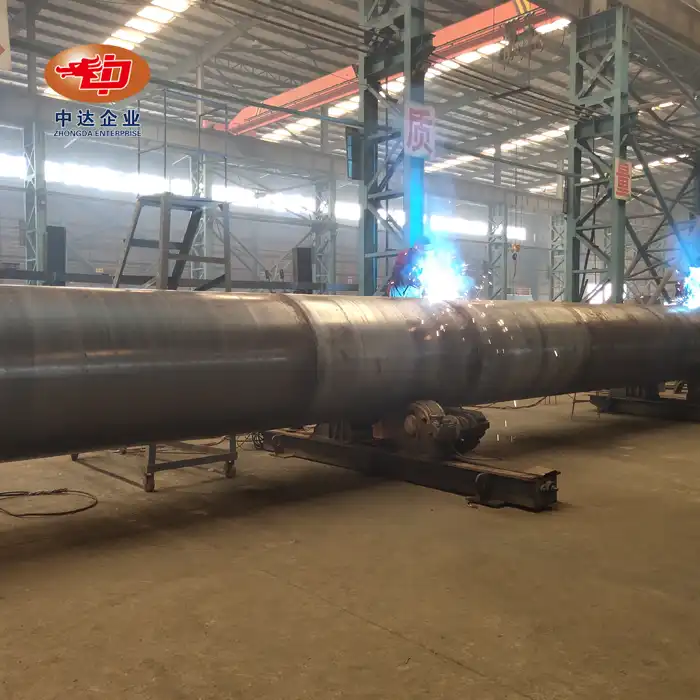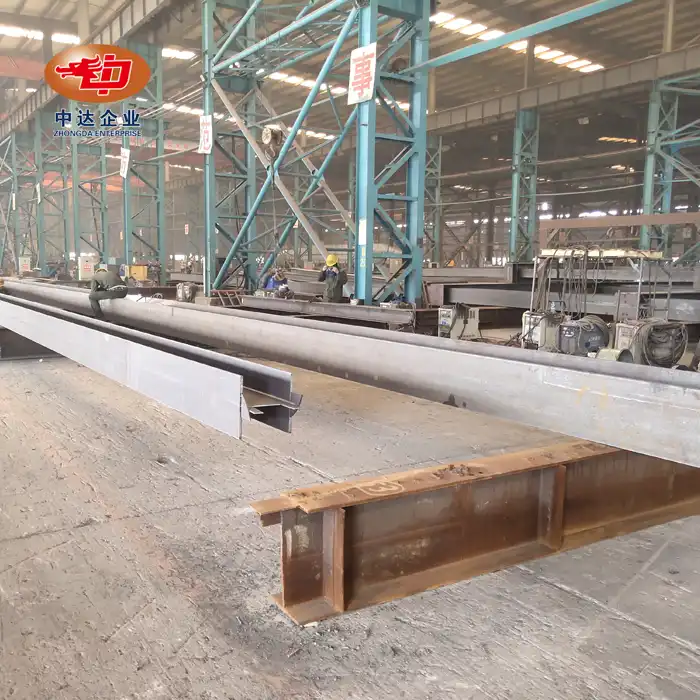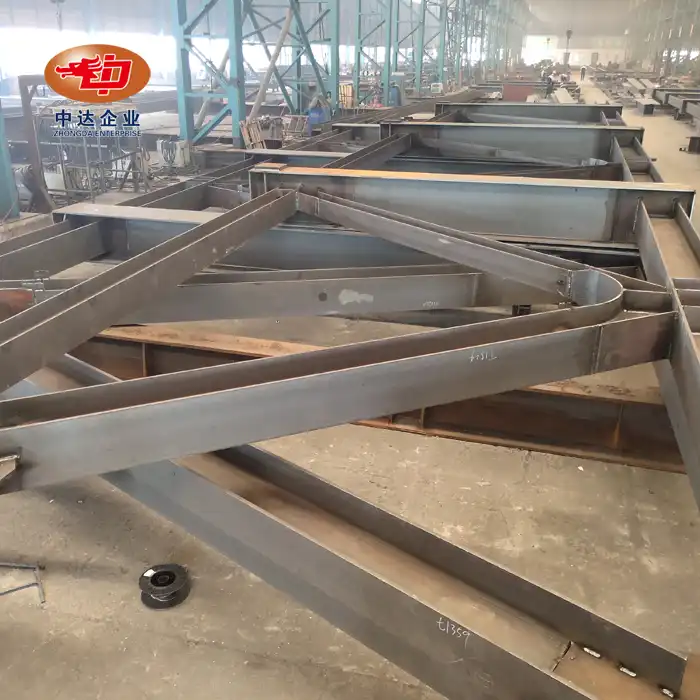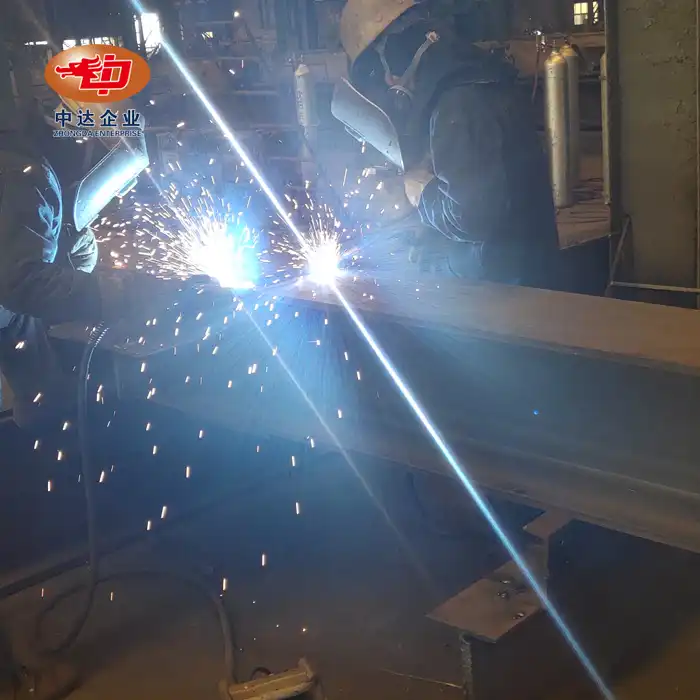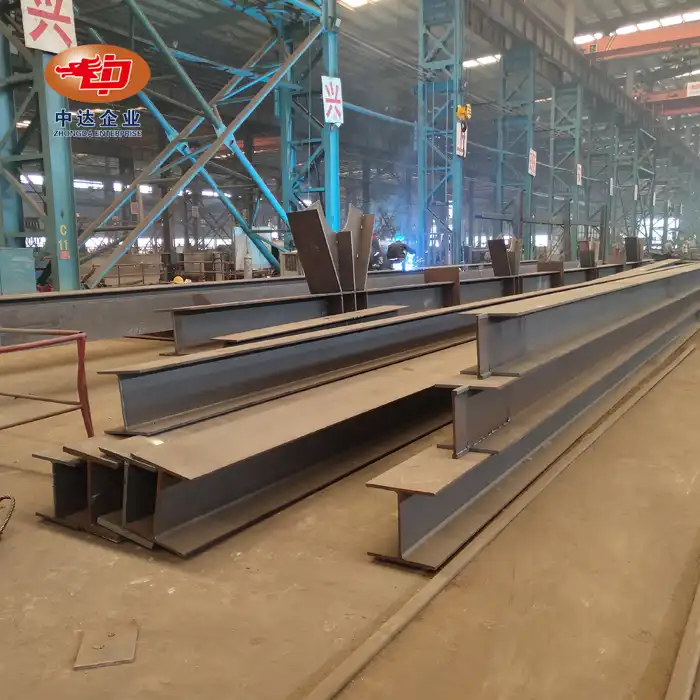Understanding Q345B Steel: Composition and Key Properties
Chemical Composition of Q345B Steel
Q345B steel's exceptional performance stems from its carefully balanced chemical composition. This low-alloy, high-strength steel contains precise amounts of carbon, manganese, silicon, and trace elements like niobium and vanadium. The carbon content, typically ranging between 0.16% to 0.20%, provides the necessary strength without compromising weldability. Manganese, present at 1.40% to 1.70%, enhances hardenability and tensile strength. Silicon, at 0.30% to 0.50%, acts as a deoxidizer and improves the steel's mechanical properties.
Mechanical Properties of Q345B Steel
Q345B steel boasts impressive mechanical properties that make it ideal for structural applications. Its yield strength ranges from 345 MPa to 375 MPa, depending on the thickness of the material. This high yield strength allows for the design of lighter, more efficient structures. The tensile strength of Q345B steel typically falls between 470 MPa and 630 MPa, providing excellent load-bearing capacity. Additionally, this steel grade exhibits good ductility, with an elongation at break of at least 21%, ensuring structural integrity under various loading conditions.
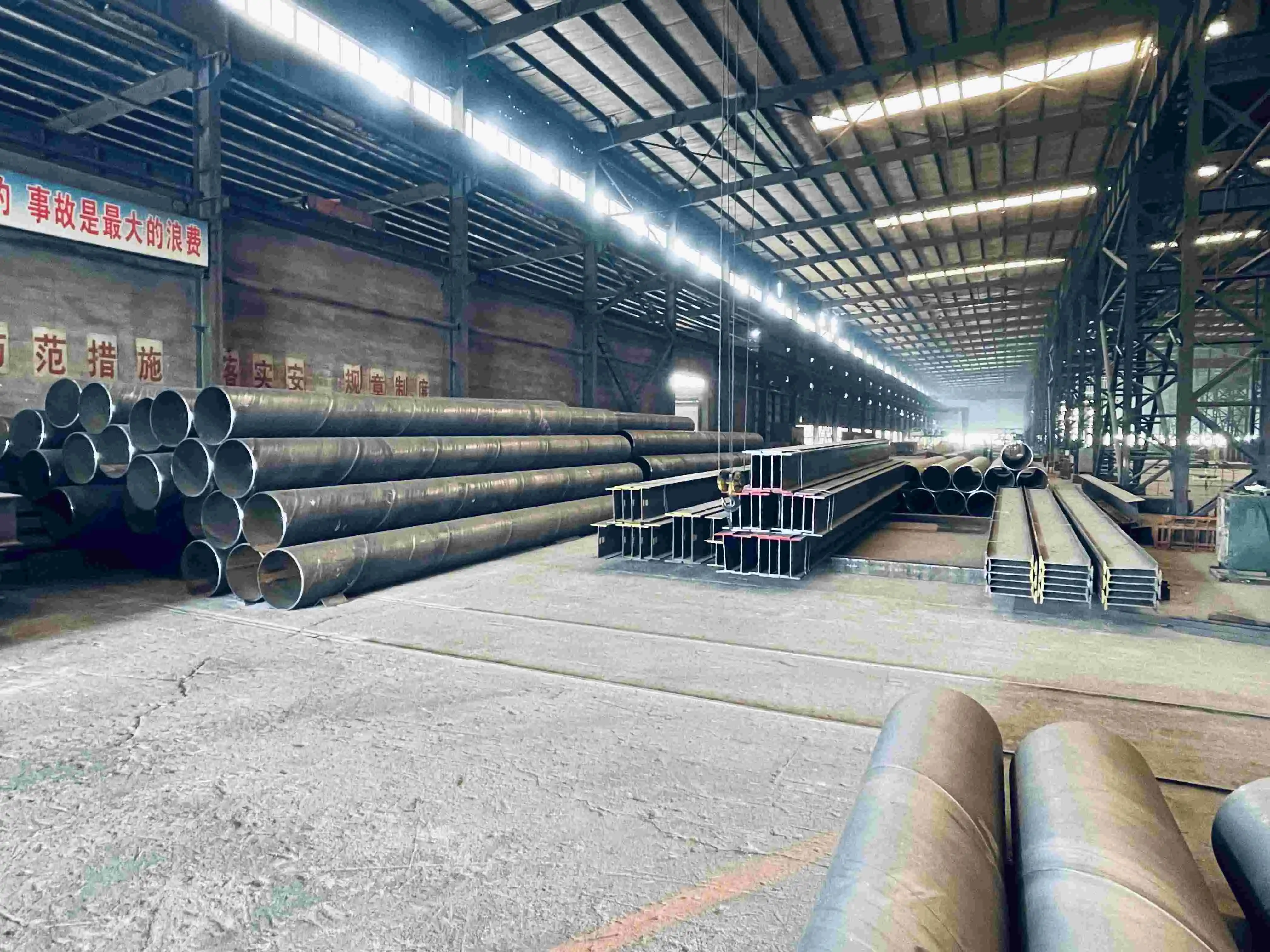
Weldability and Fabrication Characteristics
One of Q345B steel's most valuable attributes is its exceptional weldability. The low carbon equivalent value (CEV) of this steel grade minimizes the risk of cold cracking during welding processes. This characteristic allows for easier fabrication and assembly of complex structural components. Q345B steel also responds well to various cutting methods, including plasma cutting and oxy-fuel cutting, facilitating efficient manufacturing processes. These fabrication-friendly properties contribute to reduced construction times and lower overall project costs.
Applications of Q345B Steel in Modern Construction
High-Rise Buildings and Skyscrapers
Q345B steel plays a crucial role in the construction of high-rise buildings and skyscrapers. Its high strength-to-weight ratio allows architects to design taller, more slender structures without compromising safety or stability. The steel's excellent weldability facilitates the creation of complex joint systems, essential for withstanding wind loads and seismic forces in tall buildings. Moreover, Q345B steel's durability ensures the longevity of these iconic structures, reducing maintenance requirements and lifecycle costs.
Bridges and Infrastructure Projects
In bridge construction and infrastructure development, Q345B steel shines as a material of choice. Its high yield strength enables the design of longer spans and more efficient bridge structures, reducing the number of support piers required. This is particularly advantageous in challenging terrains or when crossing wide waterways. The steel's resistance to atmospheric corrosion also contributes to the longevity of bridges, making it an excellent choice for projects in coastal or high-humidity environments. Additionally, Q345B steel's good low-temperature toughness ensures structural integrity in harsh climates, making it suitable for Arctic bridges and other extreme weather applications.
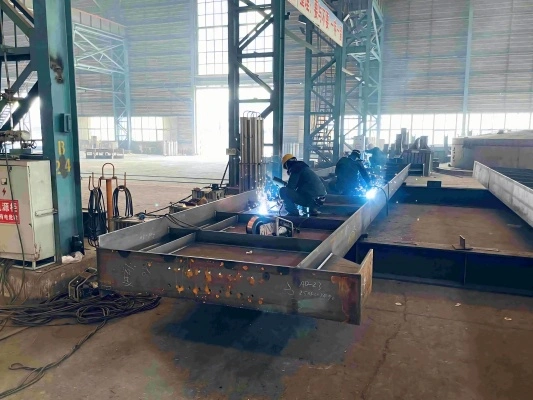
Industrial and Commercial Structures
Q345B steel finds extensive use in industrial and commercial construction. Its high strength allows for the creation of large, open spaces in warehouses, factories, and commercial buildings without the need for numerous support columns. This flexibility in design is particularly valuable in manufacturing facilities where unobstructed floor space is crucial for efficient operations. The steel's excellent fabrication characteristics also make it ideal for modular construction techniques, enabling faster project completion and reducing on-site labor requirements. Furthermore, Q345B steel's durability ensures that these structures can withstand the rigors of industrial environments, including exposure to vibrations, heavy loads, and potentially corrosive atmospheres.
Advantages of Q345B Steel in Sustainable Construction
Energy Efficiency and Thermal Performance
Q345B steel contributes significantly to the energy efficiency of modern buildings. Its high strength allows for the design of thinner structural elements, creating more space for insulation materials. This enhanced insulation capability leads to improved thermal performance, reducing heating and cooling costs over the building's lifetime. Additionally, steel structures can be easily integrated with advanced glazing systems and solar panels, further enhancing energy efficiency and promoting sustainable design practices.
Recyclability and Environmental Impact
One of the most compelling advantages of Q345B steel in sustainable construction is its recyclability. Steel is 100% recyclable without loss of quality, making it a perfect material for circular economy principles. At the end of a building's life, Q345B steel components can be easily dismantled, recycled, and repurposed for new construction projects. This recyclability significantly reduces the environmental impact of construction activities, conserves natural resources, and minimizes waste sent to landfills. The production of Q345B steel from recycled materials also requires less energy compared to primary production, further reducing its carbon footprint.
Long-Term Durability and Reduced Maintenance
Q345B steel's superior durability translates into longer-lasting structures that require less frequent repairs and replacements. This longevity reduces the need for resource-intensive renovation projects and minimizes the overall environmental impact of buildings over their lifecycle. The steel's resistance to corrosion, particularly when coupled with modern protective coatings, ensures that structures maintain their integrity and appearance for decades. This durability is especially valuable in harsh environments or in applications where access for maintenance is challenging or costly. By reducing the frequency of repairs and replacements, Q345B steel contributes to more sustainable and economically viable construction practices.
Conclusion
Q345B steel has firmly established itself as a pivotal material in modern construction, offering a blend of strength, versatility, and sustainability. Its exceptional mechanical properties, coupled with excellent fabrication characteristics, make it an ideal choice for a wide range of structural applications. From soaring skyscrapers to resilient bridges and efficient industrial facilities, Q345B steel enables innovative designs that push the boundaries of what's possible in construction. As the industry continues to prioritize sustainability and efficiency, the role of Q345B steel in shaping our built environment is set to grow, promising a future of more durable, adaptable, and environmentally friendly structures.
FAQs
What makes Q345B steel different from other steel grades?
Q345B steel stands out due to its high yield strength, excellent weldability, and superior corrosion resistance, making it ideal for structural applications in modern construction.
Can Q345B steel be used in extreme weather conditions?
Yes, Q345B steel performs well in extreme temperatures, including Arctic conditions, due to its good low-temperature toughness.
Is Q345B steel environmentally friendly?
Q345B steel is 100% recyclable and contributes to energy-efficient building designs, making it a sustainable choice for construction projects.
Expert Q345B Steel Solutions for Modern Construction | Zhongda Steel
At Shenyang Zhongda Steel Structure Co., Ltd., we specialize in delivering premium Q345B steel solutions for cutting-edge construction projects worldwide. Our state-of-the-art 120,000 m2 facility, equipped with BIM-driven prefabrication and ultra-thick plate cutting technology, ensures unparalleled precision and quality. As a trusted manufacturer and supplier, we offer tailored Q345B steel products to meet your specific project requirements. Experience our engineering excellence and global impact. Contact us at Ava@zd-steels.com to elevate your construction endeavors with Zhongda Steel's expertise.
References
Zhang, L., & Wang, Q. (2020). Mechanical properties and microstructure evolution of Q345B steel under different heat treatment conditions. Materials Science and Engineering: A, 772, 138709.
Liu, Y., Xu, L., & Lu, Y. (2019). Corrosion behavior of Q345B steel in simulated coastal-industrial atmosphere. Construction and Building Materials, 205, 164-172.
Chen, J., Young, B., & Uy, B. (2018). Behavior of high strength structural steel at elevated temperatures. Journal of Structural Engineering, 144(4), 04018015.
Wang, W., Liu, B., & Kodur, V. (2021). Fire resistance of Q345B steel under various loading conditions. Fire Safety Journal, 120, 103288.
Li, H., & Wang, Y. (2017). A study on the fatigue performance of welded joints in Q345B steel bridge structures. Engineering Failure Analysis, 81, 128-142.
Zhao, M., Chiew, S. P., & Lee, C. K. (2016). Tensile behavior of high strength structural steel Q345B at elevated temperatures. Journal of Constructional Steel Research, 122, 51-60.











